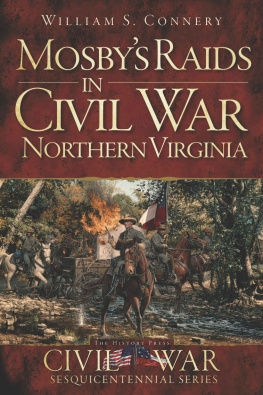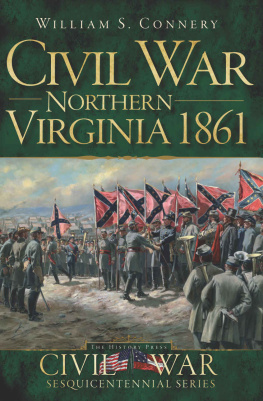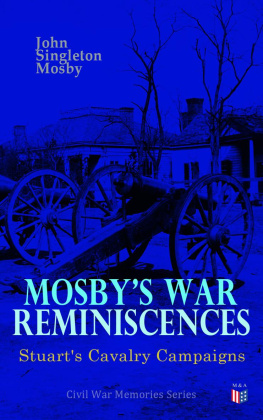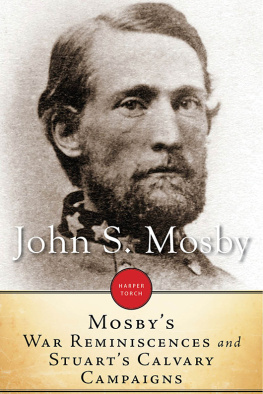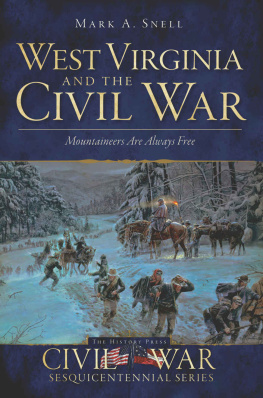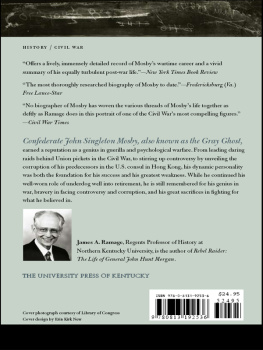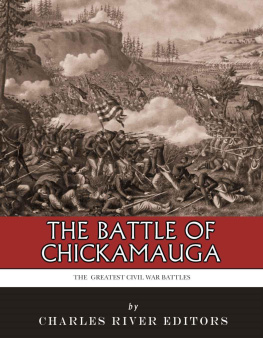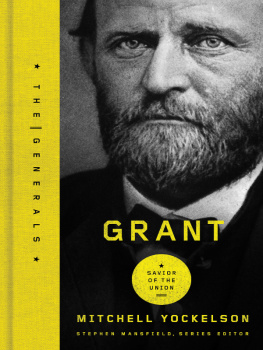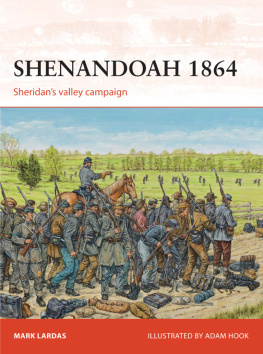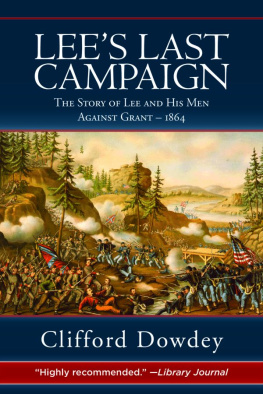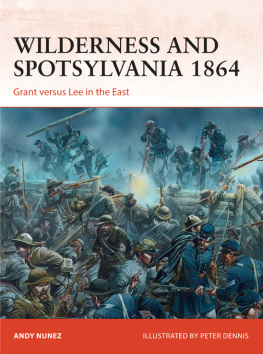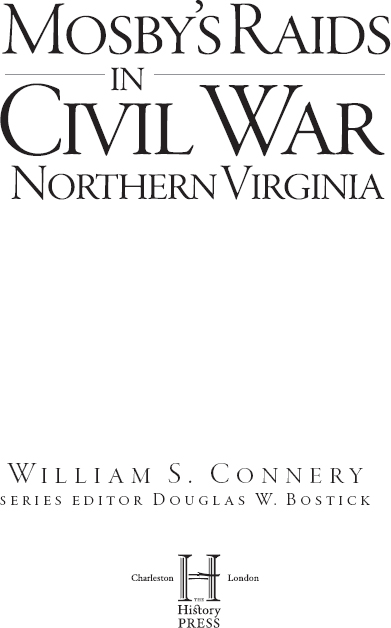
Published by The History Press
Charleston, SC 29403
www.historypress.net
Copyright 2013 by William S. Connery
All rights reserved
Front cover: Fire in the Valley, by John Paul Strain.
First published 2013
e-book edition 2013
Manufactured in the United States
ISBN 978.1.61423.877.5
Library of Congress CIP data applied for.
print edition ISBN 978.1.60949.893.1
Notice: The information in this book is true and complete to the best of our knowledge. It is offered without guarantee on the part of the author or The History Press. The author and The History Press disclaim all liability in connection with the use of this book.
All rights reserved. No part of this book may be reproduced or transmitted in any form whatsoever without prior written permission from the publisher except in the case of brief quotations embodied in critical articles and reviews.
Contents
Acknowledgements
I want to thank and recognize those who are currently keeping the spirit of Mosby alive in Northern Virginia. Tom Evans and Don Hakenson have given strong encouragement for this book. Tom is the preeminent Mosby scholar in the area. His book, Mosbys Confederacy: A Guide to the Roads and Sites of Colonel John Singleton Mosby, is still the best tour book for Mosby sites in Virginia. Don, my neighbor in Rose Hill (where Mosby captured Colonel Dulany), twice a year escorts a bus full of enthusiasts to discover for themselves the places where Mosby lived and raided. Don has also written several books on Mosby and the FranconiaRose Hill section of Fairfax County. Together with Chuck Mauro and Steve Sherman, Don has written, produced and narrated the award-winning film Mosbys Combat Operations in Fairfax County, Virginia. Don is also director of the Stuart-Mosby Cavalry Museum, located in the historic section of Centreville, Virginia, where John Ward assisted me in photographing the museums Mosby memorabilia.
I also want to acknowledge a few other people who are active in Mosby events throughout Northern Virginia. Rich Gillespie is current director of education of the Mosby Heritage Area Association (MHAA) in Middleburg, which presents Mosby-themed programs throughout the year. The headquarters of the MHAA is located in the house near where Mosby officially organized his Rangers in June 1863. Rich is also the narrator of a Mosby-themed episode of Get Lost in Loudoun. Dave Goetz, who recently published a book on the relationship between Mosby and U.S. Grant (Hell Is Being a Republican in Virginia), also conducts private tours through Mosbys Confederacy. Eric Buckland has written several books, focusing on the men who rode with Mosby. The Mosby Players, led by Paula Johnson, portray Mosby; his wife, Pauline; and other characters from the Civil War. The group also gives tours of Mosbys adopted hometown of Warrenton, the city where he practiced law after the war and where he and his wife are buried. There are at least two gentlemenJimmy Fleming and Gary Carrollwho portray Colonel Mosby at educational events throughout the region.
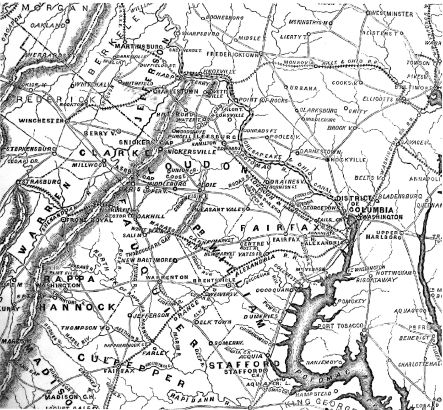
Civil Warera map of Mosbys Confederacy in Northern Virginia, including parts of Maryland and West Virginia. Authors collection.
Introduction
John Singleton Mosby, the Gray Ghost of Northern Virginia, remains one of the most fascinating and controversial partisan raiders to serve the Confederacy during the Civil War. With absolutely no military training, he rose from private to colonel based on the effectiveness of his tactics, especially in the latter half of the war. His most daring raidscapturing a Union general in March 1863 and a Union colonel in September 1863occurred in Fairfax County, well behind Yankee lines. He was the Rebel officer most mentioned in dispatches by General Robert E. Lee, whose only complaint was that Mosby tended to be wounded too often. It is believed he prolonged the war by at least six months by harassing the Manassas Gap Railroad in 1864 and kept from combat anywhere from ten thousand to forty thousand Union troops. His raiders came not only from Northern Virginia but also from other sections of the Old Dominion, together with volunteers from Maryland, England, Scotland, Ireland and Germanyand even Union deserters!
Before the war, Mosby was a staunch Unionist. But when his native state of Virginia decided to leave the Union, he followed its lead, volunteering his services as a private. His daringness and resourcefulness brought him to the attention of J.E.B. Stuart, the Confederate cavalry leader. After one and a half years in Stuarts service (it was Mosbys scouting that convinced Stuart of the feasibility of his ride around Union general George B. McClellan in June 1862), Mosby was given permission to conduct independent guerrilla operations in Northern Virginia in January 1863. He officially called his Rangers into service at Rectors Cross Roads near Middleburg in June 1863. Until April 1865, Mosby led hit-and-run commando raids throughout Northern Virginia, often venturing into West Virginia, Maryland and even Pennsylvania during the Gettysburg Campaign.
Normally, cavalry on the march sent up a humming sound that could be heard for hundreds of yards at night. Sabers and scabbards clanked, canteens jingled and hooves clattered. Mosby, carefully practicing stealth, forbade sabers, canteens and clanking equipment; his column moved so quietly that civilians lying in their beds in houses next to the road recognized when Mosbys men were passing only by the sound of their hoofbeats. Near the target, he would veer off into soft fields or woods, and it was so quiet that the men could hear whippoorwills calling in the distance.
Silence! Pass it back, he ordered, and from that point, he directed only with hand signals. If attacking dismounted, he would have the men remove their spurs and leave them with the horse-holders. He walked in soft snow or used the sound of the rain and wind to cover footsteps and once timed his final pounce with the sound of coughing by a Union horse. We made no noise, he wrote, and one of his men recalled, Our men were in among the prostrate forms of the Yankees before they were fairly awake, and they assisted some of them to unwind from their blankets.
Modern military studies of sleep deprivation indicate that cognitive skills deteriorate after one night without sleep; after two or three nights, performance is considerably impaired. Confederate general John Hunt Morgans men were falling asleep on the road during his IndianaOhio Raid of JuneJuly 1863, and his exhausted scouts failed him at Buffington Island by reporting that the ford was guarded by regular forces when they were only a few frightened home guards. General Abel D. Streight became groggy from exhaustion and sleep deprivation on a raid in Alabama in the spring of 1863, and Confederate general Nathan Bedford Forrest deceived him into surrendering to a force less than half his size. Union general H. Judson Kilpatrick became worn down and lost his nerve in his raid on Richmond, Virginia, with Colonel Ulric Dahlgren early in 1864 and was driven away by defenders that he outnumbered six to one. But Mosby carefully saved the energy of his men and horses, moving slowly into a raid for maximum performance in the fight and hasty withdrawal. He preferred to strike at about 4:00 a.m., when guards were least alert and reserves most soundly asleep. He said that it was easy to surround sleeping men and that it took five minutes for a man to awaken out of a deep sleep and fully react.

